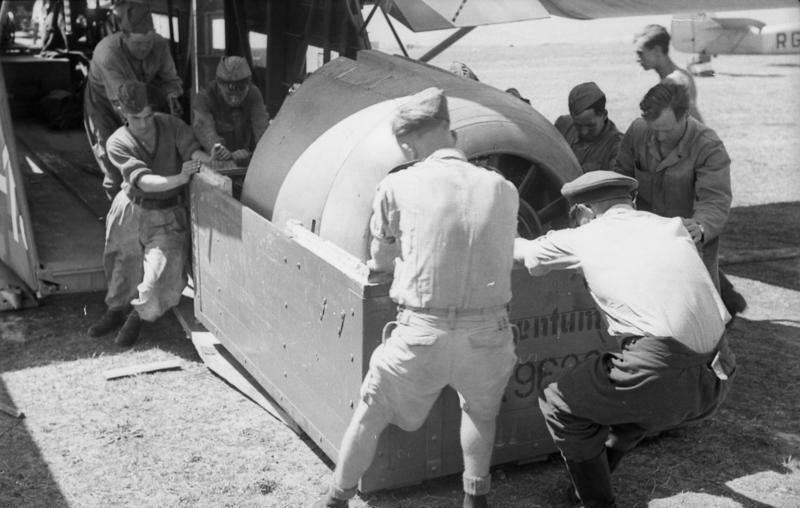My usual Castle Bromwich pulls its finger out earlier POD results in more Spitfires for FC allowing for a 50/50 split in Squadrons (24 each as opposed to 19/29 mix) rather than the 60/40 split not including Defiant (2 Squadrons) and Blenheim (8 Squadrons).
This results in fewer Hurricane Squadrons (24 vs 29 OTL) allows for the full allocation of 24 aircraft on strength for each squadron on June 1st as opposed to the average of just 18 OTL.
This results in far less burden on each squadron keeping 12 aircraft operation at any given moment (on average 1/4 of all aircraft would be undergoing routine planned maintenance at any given moment and 18 aircraft provides a very small margin)
With the burden on the Hurricane 'estate' of aircraft and supporting industry's much reduced the Royal Navy's request for a decent single engine fleet defence fighter is more easily responded too and on the same day the Fairey Fulmar enters service full development begins on the Sea Hurricane
(Note this is in addition to the 'CAM Hurricanes' of OTL)
An unholy triumvirate of Hawkers, Vickers and Fairey designers very quickly designs a simple folding wing and 6 months later final assembly for 300 fighters is given to Folland Aircraft on the Hamble in Hampshire near Southampton with production/final assembly starting from April
Although Folland Aircraft only manage to construct 70 odd airframes before the fall of France resulting in Sea Hurricane production halting with all efforts for the next 4 months quite rightly focused on supporting the Hurricane 'fleet' for Fighter command - with those 70 aircraft being used to form 2 operational RN FAA Squadrons used to defend Scapa Flow and free up FC assets for the rest of the UK.
During Oct with the Battle of Britain won production resumes on the Sea Hurricane and by the new year 5 FAA Squadrons (each with a shadow squadron) are stood up and operating from the Carriers Formidable, Ark Royal, Furious and 2 'land based squadrons' 1 each based at Scapa Flow and Gibraltar.
The Navy had also decided that the Sea Hurricane being a superior fighter to the Fulmar, request that this plane replaces further Fulmar Orders and so a further 600 Sea Hurricane IIA are ordered in late 1940.
This version of the aircraft benefitting from the improved engine and leveraging improvements made to the 'land' based variant such as the armament of 4 x HS404 20mm cannon and the first Squadrons convert to this plane in mid 41 and it is this aircraft upon which the burden of the Mediterranean battles fall
It is primarily through the Navy's insistence on 20mm cannon armed fighters that all RAF produced Hurricanes are also built with the Cannon wing and the 12 machine gun version is never put into production.
Aware that the Performance gap of the MKIIA verses the latest German fighters is increasing the Navy seeks to leverage development of the Griffon Engine resulting in the Sea Hurricane MkVc - the most produced variant of the Sea Hurricane - which enters operational service in mid 42 with a 1700 HP Griffon - 450 are ordered
It is 24 of these aircraft operating from the escort carriers Avenger and Biter that inflicted so many losses on Luftflotte 5 during the defence of PQ18
Again the improved Navy version leverages further improvements to the RAFs fighters and with serious issues being experienced with the Typhoon, a griffon engine version of the Hurricane also named the Hurricane Vc is produced as a fighter bomber, the difference being the aircraft being slightly better armoured against ground fire, with several thousand made between late 1942 and 1944 and Rocket equipped MKVs are a common feature in the skys above Normandy and in Burma.
The last variant of the Sea Hurricane is the MK X with a full blown bubble canopy and 2200 HP Griffon is seen as the best of the Hurricane fighters - with over 340 delivered to the RN before VJ day but with the US made Hellcats and Corsairs being provided in large numbers, both having superior performance, particulalrly in range, the MK X is mainly used on Escort carriers and primarily as fighter bombers in the closing stages of the Pacific war


